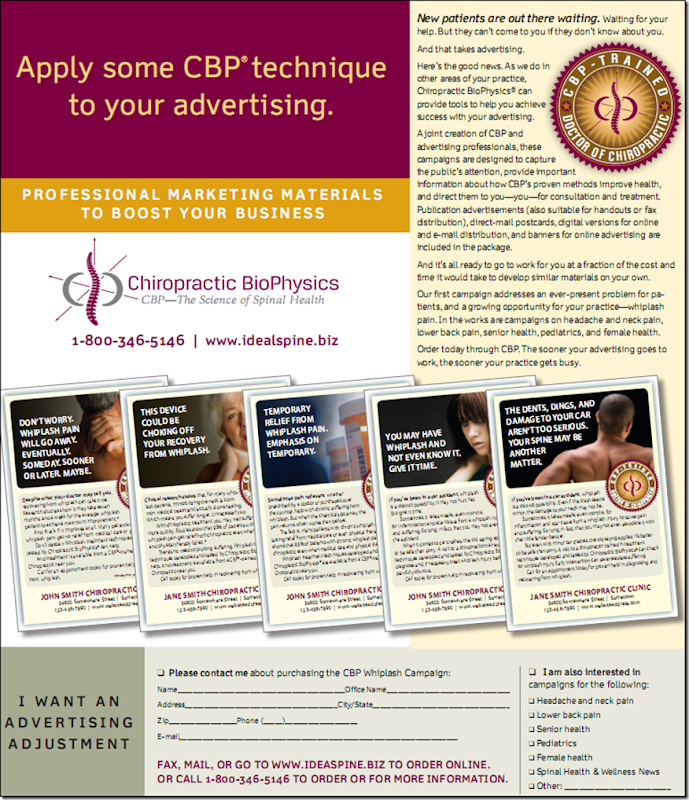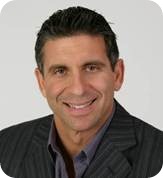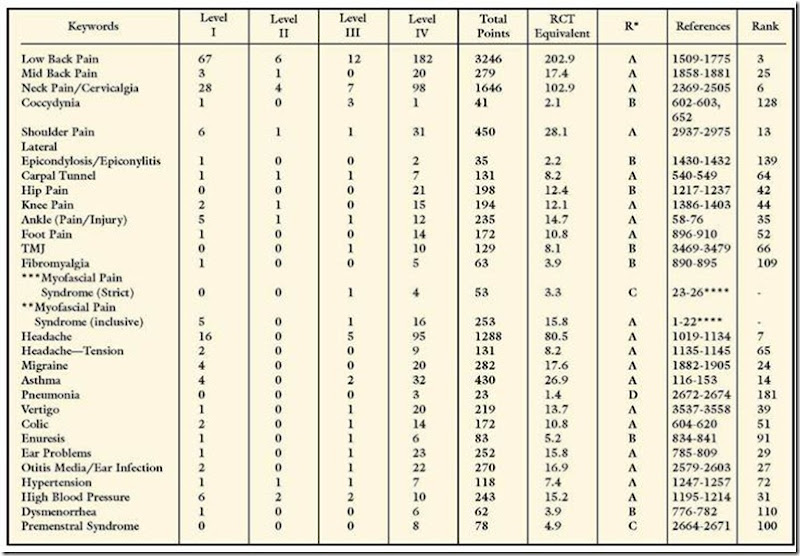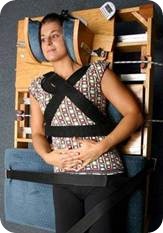Update on Spinal-Visceral Relationships: The Nucleus Intermedius
 Tuesday, April 13, 2010 at 8:48AM
Tuesday, April 13, 2010 at 8:48AM Dan Murphy, DC—
Private Practice of Chiropractic;
Diplomate American Board of Chiropractic Orthopedist;
Faculty Life Chiropractic College West;
Vice President ICA 2003-2009;
ICA Chiropractor of the Year 2009
The intermedius nucleus of the medulla: A potential site for the integration of cervical information and the generation of autonomic responses.
Edwards IJ, et al. Journal of Chemical Neuroanatomy November 2009, 38, pp. 166–175.
KEY POINTS FROM DAN MURPHY
1) The intermedius nucleus of the medulla (InM) [nucleus intermedius] receives afferent information from:
a) The neck musculature
b) The vestibular nuclei
2) The nucleus intermedius sends monosynaptic projections to the nucleus of the solitary tract (NTS)
3) The nucleus intermedius integrates information from the head and neck and relays this information on to the nucleus of the solitary tract where suitable autonomic responses are generated.
4) The nucleus intermedius also communicates with the hypoglossal nucleus to influence movements of the tongue and upper airways.
5) Outputs from the nucleus intermedius to the nucleus tractus solitarius and hypoglossal nucleus suggest a role in the co-ordination of tongue movements and autonomic responses to changes in posture. [Very Important: the nucleus intermedius co-ordinates autonomic responses to postural changes]
6) The nucleus intermedius has a spinal cord component called the “central cervical nucleus” or the “medullary portion of the central cervical nucleus” or the “intercalated nucleus” or the “nucleus intercalatus of Staderini.”
7) The spinal cord component of the nucleus intermedius (central cervical nucleus) is “located lateral to the central canal at the border of the dorsal and ventral horns.”
8) Sensory fibers from the upper cervical dorsal root ganglion (DRG) directly enter the nucleus intermedius. [Very Important]
9) Sensory nerves from the suboccipital muscles, the sternocleidomastoid muscle and the longus capitis muscle project to the nucleus intermedius via the upper cervical spine dorsal root ganglion. [Very Important: the sensory projections from these muscles are mechanoreceptors and proprioceptors; alterations of mechanical afferent input from these muscles alters the input to the nucleus intermedius, then to the nucleus tractus solitatius and to subsequent autonomic responses]
10) “These projections from the cervical DRG to the nucleus intermedius have been proposed to be proprioceptive, which suggests that activity within the nucleus intermedius is heavily influenced by the position of the head relative to the trunk.” [Very Important]
11) “Chemical or electrical stimulation of the nucleus intermedius causes monosynaptic excitatory and inhibitory postsynaptic potentials in the nucleus of the solitary tract (NTS).”
12) The authors suggest that the greatest influence of the nucleus intermedius is to the “autonomic circuits relating to the cardiovascular system.”
13) Nucleus intermedius neurones are “under the influence of information arising from the neck region, in particular the dorsal neck muscles.”
14) One of the functions of the nucleus intermedius is to elicit autonomic responses to movements of the head to complement those triggered by the vestibular system.
15) The vestibular system regulates cardiovascular autonomic (sympathetic) responses to head movements.
16) Innocuous mechanical stimulation of the neck of humans that does not activate the vestibular system evokes changes in heart rate and blood pressure, perhaps through the nucleus intermedius. [This is like saying that altered mechanical afferent input from the neck {innocuous mechanical stimulation} subsequent to the chiropractic subluxation alters the neurological influence to the nucleus intermedius, in turn influencing the autonomic control of heart rate and blood pressure. Recall that the study in the Journal of Human Hypertension, March 2007, showed that specific upper cervical chiropractic adjustments (NUCCA) significantly reduced blood pressure, and the outcomes remained stable during an 8 week follow-up period]
17) Low threshold stimulation of the nerves entering the C1 and C2 DRG can elicits changes in the activity of both sympathetic and respiratory nerves. [Very Important: supports chiropractic adjustments influencing sympathetic neurology]
18) Proprioceptive information can play a role in modulating the autonomic nervous system. [Very Important: this is a central theme to chiropractic clinical approaches to many non-musculoskeletal syndromes]
19) “Neurones in the nucleus intermedius are under the influence of sensory afferent information arising from the neck region.” [Very Important]
20) The nucleus intermedius receives afferent input from the vestibular nuclei. [Important because the vestibular nucleus also receives monosynaptic inputs from upper cervical spine afferents]
21) Upper cervical DRG afferent fibers project to the nucleus intermedius, and these fibers are “proprio- and mechano-ceptive afferents” and not nociceptors. [This is very important because it implies that non-painful aberrant mechanical afferent input from the upper cervical spine can alter autonomic function. In the study from the Journal of Human Hypertension, March 2007, which showed a significant reduction of blood pressure with specific upper cervical chiropractic adjustments, the authors noted that none of the patients were suffering from neck or back pain]
22) The authors suggest the primary afferents influencing the nucleus intermedius are from the upper cervical muscles “adding weight to the theory that the nucleus intermedius is under the influence of cervical muscles.”
23) “Changes in the positioning of the head relative to the trunk, or sensory information arising from the neck musculature, have been clinically implicated in the control of heart rate and blood pressure.” [Very Important: the upper cervical chiropractic subluxation is a change in the “positioning of the head relative to the trunk, or sensory information arising from the neck musculature”]
24) “The nucleus intermedius acts to integrate information from both the neck musculature and the vestibular system before relaying this information on to the nucleus tractus solitarius.”
25) This pathway from the neck musculature to the nucleus tractus solitarius might be behind the “changes in heart rate and blood pressure observed following upper cervical chiropractic manipulations and autonomic disturbances observed in whiplash patients.” [Very Important: these authors acknowledge the ability of upper cervical chiropractic adjustments to influence heart rate and blood pressure, both autonomic functions]
26) “The nucleus intermedius neurones are strongly targeted by afferent fibres projecting via the upper cervical DRG,” and this “information can manifest as changes in autonomic variables.”
27) The nucleus intermedius “plays a role in the generation of autonomic responses to movements of the head,” especially as it is monosynaptically connected with the nucleus tractus solitarius.
COMMENTS FROM DAN MURPHY
This is a very important article for chiropractors. It explains the neuroanatomical relationship between upper cervical spine subluxation (a mechanical problem) and visceral autonomic neurology. The authors use chiropractic adjustments of the upper cervical spine influencing cardiac function as support for their neuroanatomical findings. This study supports the 115 years of clinical observations of chiropractors. It shows the “biological plausibility” of the influence of chiropractic adjustments on non-musculoskeletal syndromes.
 CBP Seminars | Comments Off |
CBP Seminars | Comments Off | 





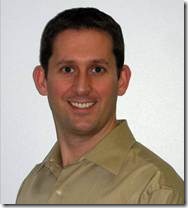
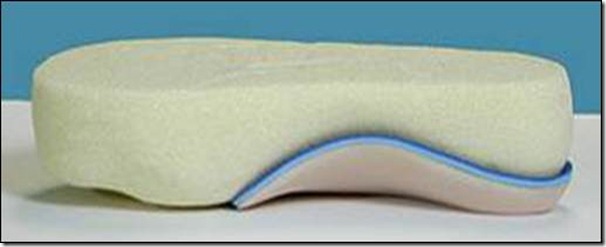
![clip_image002[6] clip_image002[6]](http://lh6.ggpht.com/_TwOomLHsIQE/S8D6v5V-S3I/AAAAAAAABGk/lsBCC9xqU2s/clip_image002%5B6%5D_thumb.jpg?imgmax=800)


